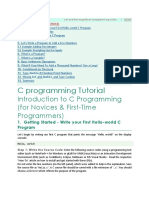0% found this document useful (0 votes)
72 views62 pagesBeginner's Guide to Cryptocurrency
Uploaded by
Brigitte WilliamsCopyright
© © All Rights Reserved
We take content rights seriously. If you suspect this is your content, claim it here.
Available Formats
Download as PDF, TXT or read online on Scribd
0% found this document useful (0 votes)
72 views62 pagesBeginner's Guide to Cryptocurrency
Uploaded by
Brigitte WilliamsCopyright
© © All Rights Reserved
We take content rights seriously. If you suspect this is your content, claim it here.
Available Formats
Download as PDF, TXT or read online on Scribd
/ 62







































































































